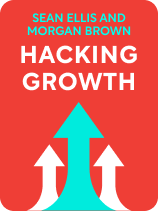

This article is an excerpt from the Shortform book guide to "Hacking Growth" by Sean Ellis and Morgan Brown. Shortform has the world's best summaries and analyses of books you should be reading.
Like this article? Sign up for a free trial here.
Why is customer retention so important? How does losing customers affect your business’s bottom line?
Customer retention is so important because it often costs more to acquire a new customer than to retain an existing customer. Hence, the effort spent to retain one customer gives a better ROI than acquiring one additional customer.
With this in mind, here’s how to retain customers so your business can stay profitable.
Staying Loyal: Improve Your Retention
Retention determines a company’s success over time. If you don’t know how to retain customers, you won’t stay profitable. Retaining customers involves analyzing what causes users to leave and optimizing to reduce those factors.
First, break down your users into cohorts. A cohort is a group of users identified by a shared trait. You can divide cohorts by age, location, gender expression, educational status, and so on. The authors recommend starting with a cohort for each month’s customers: People who join in January are the “January cohort,” and so on for each month. This allows you to track retention by month and analyze users to find patterns in the behavior of those who leave. Knowing those behaviors, you can look for ways to change your user experience and reduce the losses. There are three areas of retention to work on: initial, middle, and ongoing retention.
#1: Initial Retention
Immediately beyond your NUX, prompt customers to come back and continue to use your product. The authors recommend using triggers such as emails and notifications to prompt users to return. Apply the growth hacking cycle to optimize the language and presentation of these triggers and product experiences.
(Shortform note: Three types of effective trigger emails are: “Tips and tricks” emails that help your users learn your product, if necessary; emails that prompt inactive users to return and continue what they were doing; and emails that reward users for taking actions that you want them to. For each of these, you can tweak the messaging, presentation, timing, and more with growth hacking in order to personalize triggers for each customer or cohort.)
#2: Middle Retention
Once the customer has opted to return, keep them engaged. You can do this with a variety of tactics, including loyalty programs, product ambassador programs, by offering in-app perks for regular use, and so on. The authors suggest rewarding your customers for using your product so they’ll form a habit of doing so. When a user forms a habit, your product will become a regular part of their life. In turn, they’ll keep paying for the service.
(Shortform note: In Hooked, Nir Eyal explains that the key to creating a product that hooks your customers is to use variable rewards, rather than consistent rewards. A predictable reward doesn’t cause cravings, but variable rewards cause people to crave the next unpredictable reward, much like a slot machine. Social media sites offer variable rewards in the form of likes and comments—when you post on Facebook, you’ll get varied amounts of engagement. So when one of your posts gets a ton of attention, it feels novel and rewarding.)
#3: Ongoing Retention
Last, get customers to stick around for the long haul. The authors stress that you must continually introduce new features to keep your product competitive and valuable. To do this, talk to your customers to get feedback and build your product to serve their wants and needs. You can also use cohort analysis to find the features people use most and experiment with improving those. According to the authors, it’s important that you find a steady testing pace that doesn’t bother existing users. People get attached to what they like, but they’ll embrace changes if they come a little bit at a time.
(Shortform note: In addition to continually optimizing your product and analyzing your data, try developing your relationships with your customers. Treating people as people—not just as sources of income—humanizes your business and helps you build for the long term. Businesses that treat people with more respect tend to enjoy that same respect in return, as well as a favorable public image. This can be as simple as sending personalized thank-you notes, having engaged service agents who are in step with your company’s mission, and always being open to conversation with your customers.)

———End of Preview———
Like what you just read? Read the rest of the world's best book summary and analysis of Sean Ellis and Morgan Brown's "Hacking Growth" at Shortform.
Here's what you'll find in our full Hacking Growth summary:
- Why the old approaches to marketing no longer work in a high-tech world
- How to rapidly increase your revenue and grow your business
- A step-by-step guide on how to use the growth hacking method






